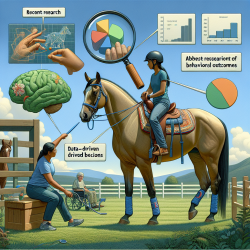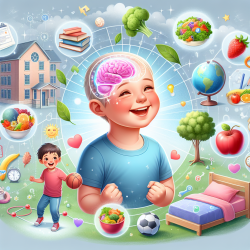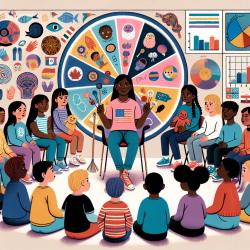As a practitioner in the field of speech-language pathology, it is crucial to explore innovative and evidence-based interventions that can significantly enhance outcomes for children with various challenges. One such promising intervention is Equine-Assisted Intervention (EAI), which has been shown to have profound effects on emotional and behavioral outcomes. This blog delves into the key findings from the research article "An Exploration of the Mechanism of Action of an Equine-Assisted Intervention" and provides actionable insights for practitioners.
Understanding the Mechanism of Action in EAI
The study by Hemingway et al. (2019) explores how learning natural horsemanship skills through EAI causes participants to experience emotional arousal, which is linked to positive behavioral outcomes. This intervention, particularly effective for young people with chronic mental health and behavioral problems, shows that emotional arousal during tasks with horses leads to increased calmness, assertiveness, focus, empathy, communication skills, and confidence.
Implementing Findings to Improve Practice
Practitioners can enhance their skills and improve outcomes by integrating the following insights from the research:
- Emotional Arousal as a Learning Tool: Recognize the importance of emotional arousal in learning processes. Incorporate activities that evoke positive emotional responses to enhance engagement and retention.
- Building Connections: Foster strong, empathetic relationships between participants and therapy animals. This connection can be pivotal in achieving therapeutic goals.
- Structured Learning: Use structured, goal-oriented activities similar to the Parelli Natural Horsemanship games. This approach can help in breaking down complex tasks into manageable steps, promoting success and confidence.
- Monitoring Emotional States: Utilize tools and methods to monitor and understand the emotional states of participants. This can help in tailoring interventions to meet individual needs effectively.
Encouraging Further Research
While the current findings are promising, there is a need for further research to fully understand the mechanisms at play in EAI. Practitioners are encouraged to engage in or support research initiatives that explore the long-term impacts and refine the methodologies used in these interventions.
Conclusion
Integrating the insights from the study on Equine-Assisted Interventions can significantly enhance the therapeutic outcomes for children with behavioral and mental health challenges. By focusing on emotional arousal, building connections, structured learning, and monitoring emotional states, practitioners can create more effective and impactful therapy sessions.To read the original research paper, please follow this link:
An Exploration of the Mechanism of Action of an Equine-Assisted Intervention.










